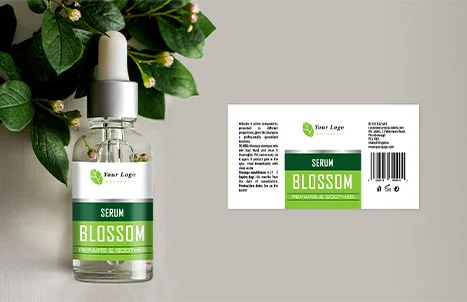Online Shelf Appeal: How to dress your products for the web
In today's digital age, companies face a unique challenge when it comes to selling their products: how to replicate the in-store shelf appeal in an online environment. With the rise of e-commerce, many consumers are turning to online shopping for convenience and accessibility, making it more important than ever for companies to create a strong online presence that resonates with their target audience. In this article, we will explore some strategies that companies can use to create a strong online shelf appeal that attracts and engages consumers in the ongoing battle of online vs in store shopping.

Consistent Branding
Another crucial factor in replicating shelf appeal online is consistent branding. Just like in a physical store, a strong brand identity can make a product or shop stand out online vs in store. One of the best ways to ensure your branding is consistent is to update designs, and all images, colours, and layouts are standardised. At AA Labels, we can support any brand refresh with packaging and bespoke labels tailored to your needs, including specialist labels for extreme temperatures and security.
Companies can use consistent branding elements such as colour, typography, and imagery to create a cohesive look and feel across all their online channels. This consistency helps to build brand recognition and familiarity, which can increase consumer trust and loyalty.
User Reviews and Ratings
Along with the areas where online vs in store competes, there are also some clear advantages to using an online store. One advantage of online shopping is the ability to read user reviews and ratings. Companies can leverage this feature to create a sense of social proof and increase consumer trust.
By encouraging customers to leave reviews and ratings, companies can build a community of satisfied customers and highlight the positive aspects of their products.
Additionally, companies can use negative reviews as an opportunity to address any issues and prove their commitment to customer satisfaction, especially if they are to demonstrate a successful conclusion to the discussion.
Personalised Recommendations
Along with active reviews and feedback, advertising can also be more personalised to ensure that users see the type of product they are looking for. This functions in a similar way to a shop shelf in store and provides users with all the options they need to make an informed decision.

Companies can use personalised recommendations to replicate the in-store experience of a salesperson recommending products based on a consumer's needs and preferences. By using data and analytics, companies can recommend products that are like those that a consumer has previously purchased or viewed. This personalisation can help to create a more personalised and relevant shopping experience, which can increase consumer engagement and loyalty.
Interactive Features
Another advantage of in-store shopping is the ability to interact with products before making a purchase. Companies can replicate this experience online by incorporating interactive features such as product demos, virtual try-ons, and product configurators.
For example, a beauty brand can allow customers to try on different shades of lipstick to see how they would look on their skin tone. By providing interactive features, companies can create a more immersive shopping experience that allows consumers to engage with products in a meaningful way.
Social Media Integration
The engine fuelling all this online shopping is social media. Social media has become an essential part of many consumers' lives, with many using it to discover and purchase products. Engaging with social media is key to the success of any online shopping guide or plan and companies can leverage this trend by integrating social media into their e-commerce platforms.
For example, a fashion brand can incorporate Instagram feeds that highlight how their products are styled and worn by real customers. This not only provides social proof but also helps to create a sense of community around the brand. By integrating social media, companies can create a more dynamic and engaging shopping experience that resonates with consumers.
Seamless Checkout Process
In a physical store, consumers can pay for their purchases at the register and walk out with their products in hand. In an online environment, the checkout process can make or break a sale.
Companies need to ensure that their checkout process is seamless, easy to use, and secure. This includes providing multiple payment options, offering guest checkout, and ensuring that the website is secure and protected by SSL encryption. By providing a seamless checkout process, companies can reduce cart abandonment rates and increase sales.
Mobile Optimisation
As more consumers use their mobile devices to shop online vs in store, it's essential for companies to optimise their e-commerce platforms for mobile. This means creating a mobile-responsive website that is easy to use on smaller screens, optimising page load times, and ensuring that the checkout process is mobile-friendly. By optimising for mobile, companies can provide a seamless shopping experience that meets the needs of their mobile-first customers.
Email Marketing
Email marketing can be a powerful tool for driving sales and engaging customers. Companies can use email marketing to showcase new products, promote sales and discounts, and provide personalised recommendations.
By leveraging data and analytics, companies can send targeted and relevant emails that are tailored to each customer's needs and preferences. This not only increases the likelihood of a sale but also helps to build a relationship with customers over time.
Dress to impress with AA Labels
In conclusion, replicating in-store shelf appeal in an online environment requires companies to use a combination of strategies that leverage strong visuals, consistent branding, clear and concise product descriptions, and a litany of online tools. By using these strategies, companies can create a compelling online shelf appeal that attracts and engages consumers, and drive sales and revenue.
As online shopping continues to grow in popularity, the ability to replicate the in-store experience online will be crucial for companies to remain competitive in the marketplace. By staying up to date with the latest e-commerce trends and investing in the right tools and technologies, companies can create a strong online presence that resonates with their target audience and drives long-term growth and success.
If you’d like to know more about how we can help with your packaging or label needs, please feel free to contact us today. Alternatively, if you already have a design in mind, use our handy checkout tool and order labels in minutes. We are committed to offering high-quality labels that meet your demands, be it for a mom-and-pop store or high-end fashion brand.







